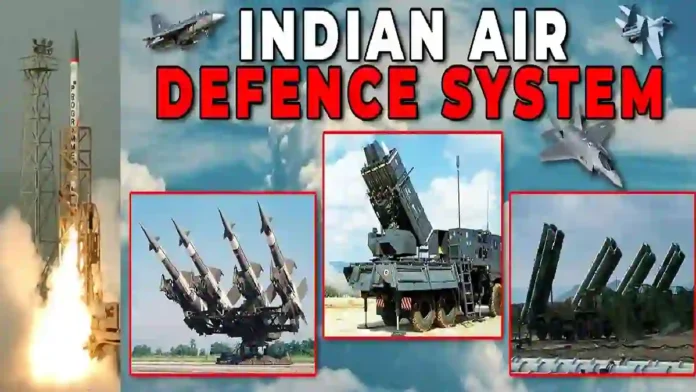Air defence systems have become indispensable in the 21st century, serving as silent sentinels that protect nations from an evolving array of aerial threats. From drones and cruise missiles to hypersonic weapons and advanced aircraft, the sky is now a contested and dynamic domain.
The rapid escalation of global security concerns, driven by regional conflicts and the proliferation of advanced weaponry, has prompted countries to invest heavily in multi-layered, technologically advanced air defence networks.
The world’s most sophisticated air defence systems as of 2025 are defined by their range, altitude, interceptor speed, and versatility against diverse threats. Their effectiveness is measured by combat performance, technological innovation, and global deployment.
Russia’s S-400 Triumf: With a range of up to 400 km, the S-400 can engage aircraft, cruise missiles, and ballistic missiles, tracking up to 80 targets simultaneously. Its mobility, integration, and combat record—such as India’s use during recent skirmishes with Pakistan—make it a global benchmark. Users include Russia, China, India, and Turkey.
Read- India to produce Rafale, Dassault Aviation partners with Tata Advanced Systems
US Patriot PAC-3 MSE: Renowned for its hit-to-kill technology, the Patriot system has a range of up to 160 km for aircraft and 35 km for ballistic missiles. It is combat-proven in the Gulf Wars and Ukraine, and widely deployed by the USA, Germany, Japan, South Korea, and Saudi Arabia.
US THAAD (Terminal High Altitude Area Defence): Designed for high-altitude interception of short- to intermediate-range ballistic missiles, THAAD operates at ranges up to 200 km and integrates seamlessly with Aegis and Patriot systems.
US Aegis Combat System With SM-3/SM-6 Missiles: With a reach of up to 2,500 km, Aegis can intercept intercontinental ballistic missiles (ICBMs) in mid-course and is a core part of NATO’s missile shield.
Israel’s Iron Dome: Specialised for short-range threats (4–70 km), the Iron Dome boasts a success rate of around 90% against rockets, artillery, mortars, and drones. It is operational in Israel and has been tested by India and Azerbaijan.
Why Air Defence Systems Matter
Air defence systems are not just defensive assets; they are strategic deterrents. By protecting cities, military installations, and critical infrastructure, these systems discourage enemy aggression and enable a nation’s air force to operate with greater freedom. The rise of drones, hypersonic missiles, and precision-guided munitions has made advanced, responsive air defence indispensable.
The core components of these systems include:
Detection: Radars and sensors identify and track incoming threats.
Command And Control: Decision-making hubs process data and coordinate responses.
Interceptors: Surface-to-air missiles and anti-aircraft guns neutralize threats before they reach their targets.
Read- Russia’s Su-57E Source Code Offer To India: A Strategic Disruption In The F-35 Fighter Race
Read- Ops Sindoor – Precision, Power & Diplomacy: The Defining Strategic Shift of Modi 3.0
India’s Air Defence: A Multi-Layered Shield
India has emerged as a global leader in air defence, building a multi-layered network that integrates indigenous innovation, international collaboration, and strategic imports. Its arsenal is among the top five globally in terms of volume, diversity, and technological sophistication.
Key Systems In India’s Arsenal
S-400 Triumf: India’s acquisition of five S-400 regiments from Russia (three deployed as of 2025, two more by 2026) has significantly bolstered its strategic deterrence, especially against Pakistan and China. The system is deployed to protect critical regions like Delhi-NCR, Punjab, and the Northeast.
Ballistic Missile Defence (BMD) Program: India’s multi-layered air defence network has demonstrated combat performance that matches or surpasses some of the most advanced global systems, particularly in recent real-world engagements. The Ballistic Missile Defence (BMD) Program is a critical initiative aimed at protecting nations from the growing threat of ballistic missile attacks, particularly those carrying nuclear warheads. Ballistic missiles, which follow a high-arching trajectory and are powered only during their initial phase, pose a significant risk due to their speed, range, and destructive potential. In response, several countries have developed sophisticated BMD systems to detect, track, and neutralize these threats before they reach their intended targets.
The primary objective of a BMD program is to safeguard a country’s population, territory, and strategic assets from incoming ballistic missiles. This is achieved through the deployment of multi-layered defence systems capable of intercepting missiles at various stages of their flight. The rationale for such programs has been driven by the proliferation of missile technology and the nuclearization of regions, as seen in South Asia, where India initiated its BMD program in 2000 following the Kargil War and in response to missile threats from neighbouring countries like Pakistan and China.




